17 State Parks To Visit Instead Of Overcrowded National Parks
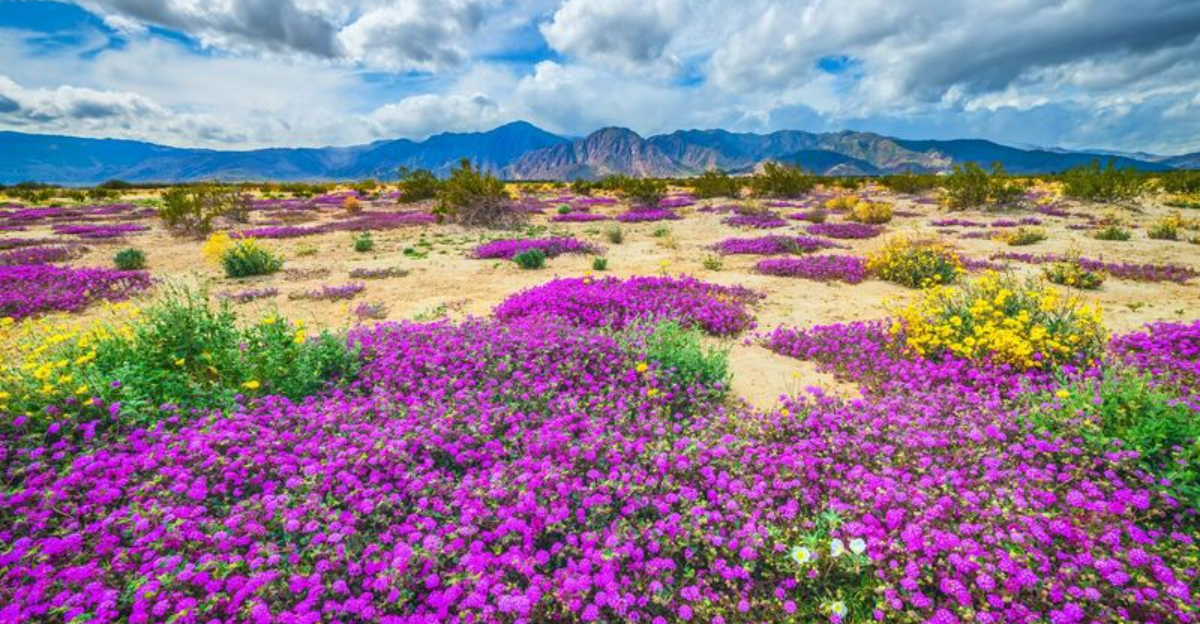
National parks are amazing, but they can get super crowded, especially during vacation seasons. Long lines, packed trails, and full parking lots can take away from enjoying nature. Luckily, state parks offer incredible natural beauty without the crowds.
Here’s my list of 17 awesome state parks that give national parks a run for their money!
1. Custer State Park, South Dakota
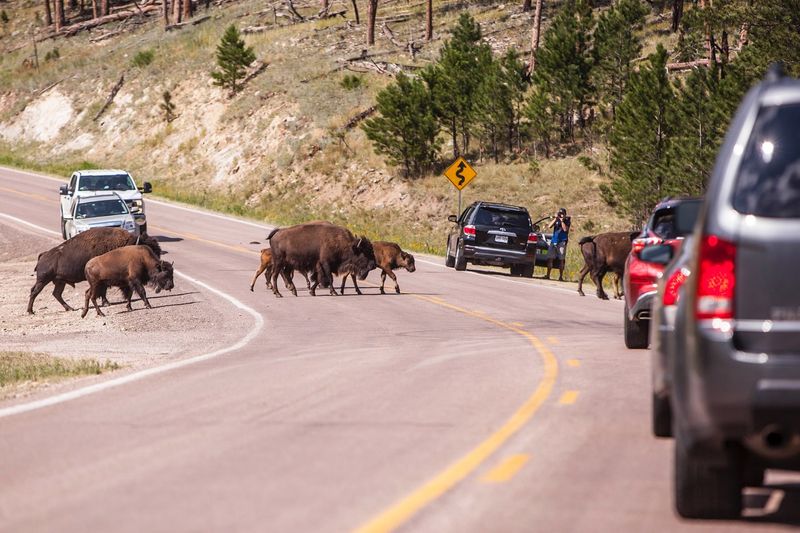
Wildlife roams freely across nearly 71,000 acres in this Black Hills gem. I’ve seen buffalo herds crossing the road just feet away from my car – an experience that rivals anything in Yellowstone but with a fraction of the visitors.
The park features granite spires, crystal-clear lakes, and rolling prairie lands. You can drive the Needles Highway with its narrow tunnels and hairpin turns for spectacular views.
Sylvan Lake offers swimming and kayaking opportunities surrounded by unique rock formations. The annual buffalo roundup each September is an unforgettable spectacle where cowboys herd nearly 1,300 bison across the plains.
2. Dead Horse Point State Park, Utah
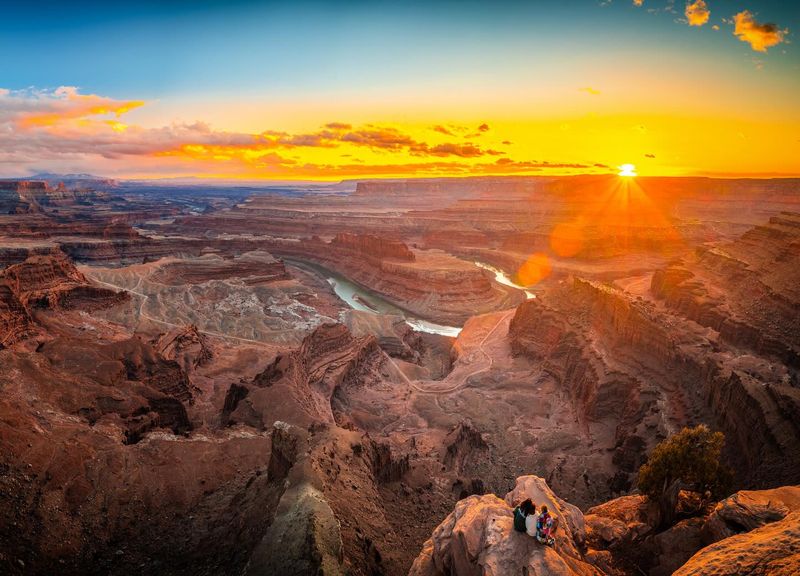
Perched 2,000 feet above a gooseneck bend in the Colorado River, this park delivers jaw-dropping views that rival the Grand Canyon. The overlook offers a panoramic vista that stretches for miles across sculpted pinnacles and buttes of Canyonlands National Park.
Morning visits reward early risers with dramatic shadows dancing across the desert landscape. The park gets its unusual name from cowboys who used the natural peninsula as a corral for wild mustangs.
Hiking trails wind along the rim, providing different perspectives of the massive canyon. At night, the incredibly dark skies make this an International Dark Sky Park perfect for stargazing.
3. Watkins Glen State Park, New York
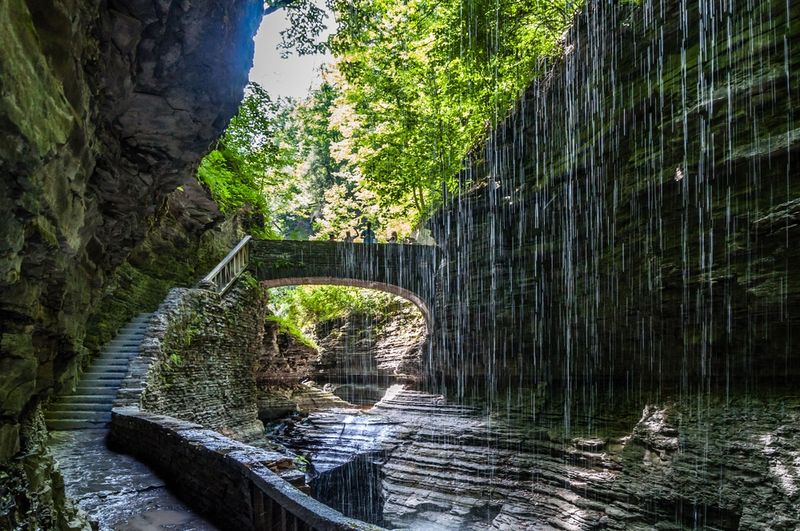
Hidden in the Finger Lakes region, this magical ravine features 19 waterfalls along a two-mile trail. Walking through feels like entering a fantasy world – moss-covered walls rise 200 feet overhead while water cascades down ancient stone steps.
The Gorge Trail takes you behind waterfalls and through spiral tunnels carved into the rock. Rainbow Falls creates a misty curtain of water that catches sunlight in spectacular displays of color.
Summer weekday mornings offer the quietest experience. The glen’s microclimate keeps it several degrees cooler than surrounding areas, making it a refreshing escape on hot days. This park packs more natural wonder into a small space than almost anywhere I’ve visited.
4. Julia Pfeiffer Burns State Park, California
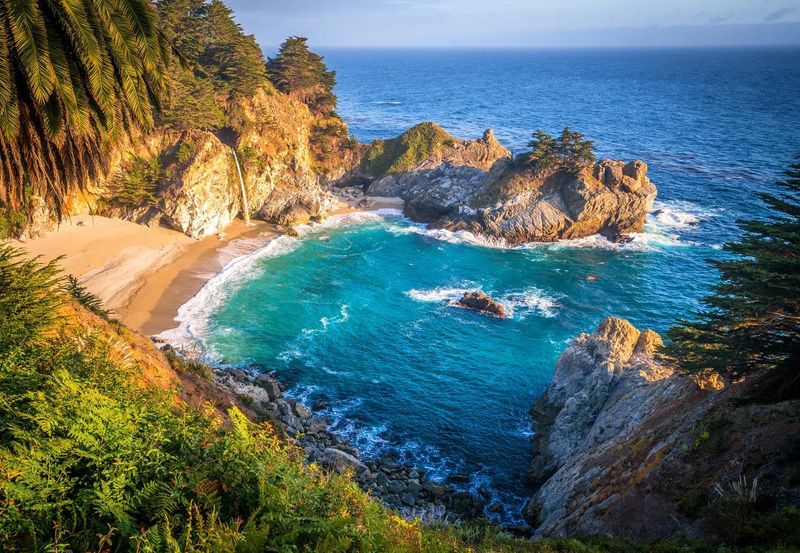
McWay Falls might be the most photographed spot along Big Sur’s coastline, yet few people realize it’s not part of a national park. This 80-foot waterfall plunges directly onto a pristine beach in a perfect horseshoe cove.
A short trail leads to the overlook where you can watch for migrating whales while enjoying the falls. Underwater Scuba Trail lets certified divers explore kelp forests teeming with colorful marine life.
The park was named after a pioneering woman rancher who lived in the area during the early 20th century. Though small compared to nearby national parks, this gem delivers one of California’s most iconic coastal scenes without the traffic jams you’d find at more famous destinations.
5. Baxter State Park, Maine
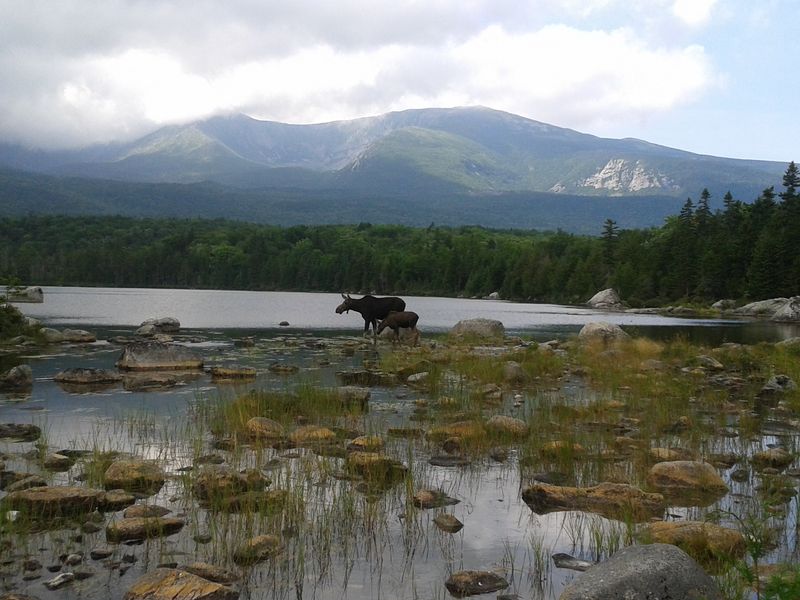
Mount Katahdin stands tall as Maine’s highest peak and the northern terminus of the Appalachian Trail. Unlike many national parks, Baxter maintains strict visitor limits and doesn’t allow RVs, preserving its wilderness character.
The park encompasses over 200,000 acres of pristine forests, ponds, and mountains. Moose sightings are common near the park’s numerous lakes and wetlands.
If you’re seeking solitude, the northern section offers remote ponds where you might fish all day without seeing another person. Percival Baxter, a former governor, purchased the land piece by piece and donated it to the state with the condition that it remain “forever wild” – a promise that continues to be honored today.
6. Valley of Fire State Park, Nevada
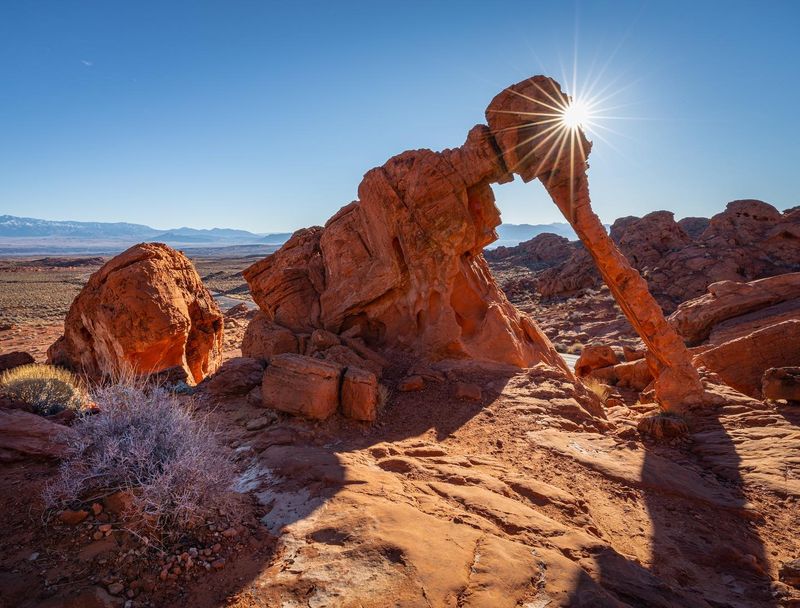
Just an hour from Las Vegas lies a landscape that seems transported from Mars. Ancient red sandstone formations create a fiery appearance that’s especially dramatic at sunset when the rocks practically glow.
Petroglyphs dating back over 2,000 years can be found throughout the park, telling stories of ancient peoples who once inhabited this harsh landscape. The White Domes Trail leads through a slot canyon with multicolored walls that change throughout the day.
Movie buffs might recognize locations from films like Star Trek and Total Recall. Despite its proximity to Vegas, this park remains surprisingly uncrowded, especially compared to nearby national parks like Zion or Death Valley. The visitor center provides excellent information about the geology that created these otherworldly formations.
7. Anza-Borrego Desert State Park, California
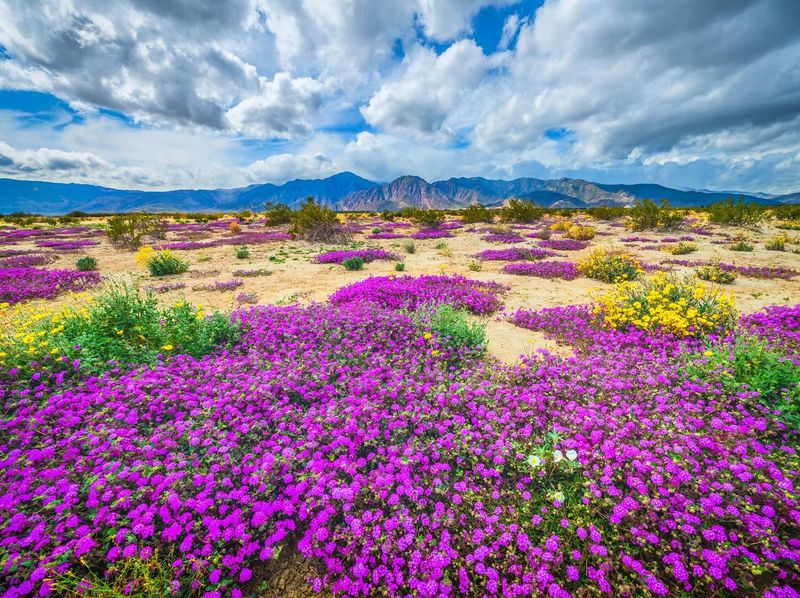
California’s largest state park transforms into a wildflower wonderland after winter rains. The spring superbloom draws visitors from around the world, yet it never feels as crowded as nearby Joshua Tree National Park.
Slot canyons, badlands, and palm oases create diverse landscapes to explore. The park contains over 600,000 acres of wilderness and more than 500 miles of dirt roads for adventure seekers.
Metal sculptures of prehistoric creatures scattered throughout the desert create surreal photo opportunities. Stargazing here is exceptional due to its International Dark Sky Park designation. During wildflower season, rangers post regular bloom updates online so you can time your visit perfectly to see carpets of desert gold, purple sand verbena, and desert lilies.
8. Lime Kiln Point State Park, Washington
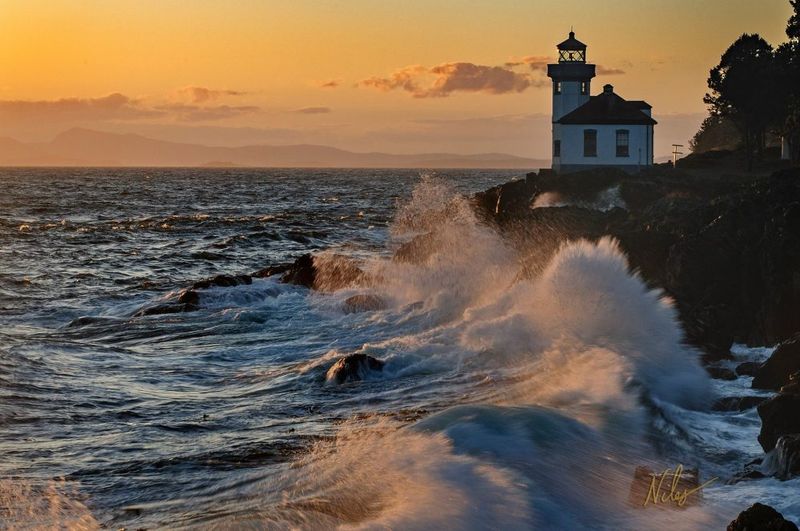
Whale watching from shore doesn’t get better than at this compact park on San Juan Island. The lighthouse perched on rocky cliffs serves as a perfect lookout for spotting orca pods that swim remarkably close to shore.
Summer afternoons offer the best chances to see resident killer whales hunting salmon. Rangers often notify visitors when whales are approaching, creating an atmosphere of shared excitement.
History buffs will appreciate the preserved lime kiln that gives the park its name. The 19th-century structure once produced lime for regional construction projects. Unlike crowded whale-watching boats, here you can sit peacefully on the rocks for hours, picnicking while waiting for the magnificent black-and-white dorsal fins to appear against the blue waters of Haro Strait.
9. Taughannock Falls State Park, New York

A waterfall higher than Niagara awaits visitors at this Finger Lakes gem. Taughannock Falls plunges 215 feet down a rocky gorge that looks like it belongs in the Pacific Northwest rather than upstate New York.
The gorge trail offers an easy 3/4-mile walk to the base of the falls through a stunning rock amphitheater. Winter transforms the falls into a magnificent ice sculpture when the water partially freezes.
Swimming is allowed at the park’s beach on Cayuga Lake during summer months. Unlike the tourist crowds at Niagara Falls, here you might have the view mostly to yourself, especially on weekday mornings. The overlook above the falls provides a different perspective that showcases the impressive height and the winding creek below.
10. Franconia Notch State Park, New Hampshire

The Old Man of the Mountain may have fallen, but this White Mountains treasure still offers scenery that rivals any national park. The Flume Gorge features narrow boardwalks clinging to 90-foot granite walls with waterfalls cascading alongside.
Echo Lake provides swimming beneath the watchful gaze of Cannon Mountain. The Aerial Tramway carries visitors to the 4,080-foot summit for panoramic views extending to four states and Canada.
Artists have drawn inspiration from this landscape for centuries. Fishing enthusiasts can try their luck in Profile Lake, named for the famous rock formation that once overlooked it. The park’s location along I-93 makes it easily accessible, yet the mountains quickly swallow highway noise, creating a wilderness experience just steps from your car.
11. Smith Rock State Park, Oregon
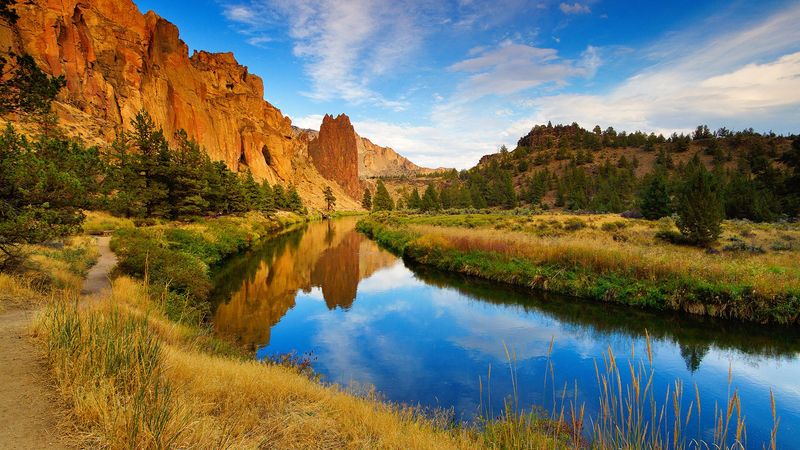
Rock climbers consider this central Oregon park a mecca, but hikers and photographers find equally compelling reasons to visit. Towering tuff and basalt cliffs rise dramatically from the winding Crooked River, creating one of the most stunning landscapes in the Pacific Northwest.
Misery Ridge Trail offers a challenging climb rewarded with 360-degree views of the Cascade Mountain Range. Golden eagles nest in the high cliffs, and river otters play in the gentle waters below.
Morning light bathes the rock faces in a warm glow that photographers chase. Though sometimes called the birthplace of American sport climbing, plenty of flat trails allow non-climbers to enjoy the scenery. The park feels like a smaller version of Yosemite Valley but without the crowds and traffic that can plague that famous national park.
12. Eldorado Canyon State Park, Colorado
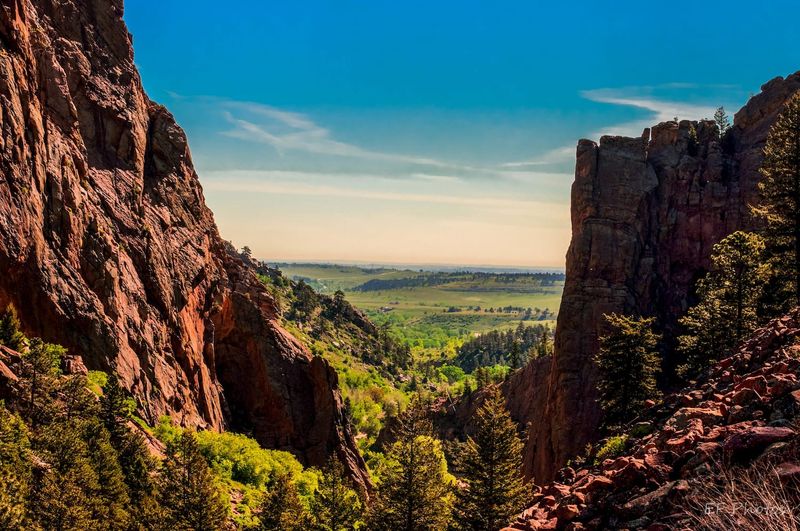
Just outside Boulder lies a hidden canyon that feels worlds away from the nearby city. Sheer golden cliffs tower up to 700 feet high, drawing world-class climbers while hikers enjoy trails with spectacular views of the Continental Divide.
South Boulder Creek flows through the canyon, creating swimming holes and fishing spots during summer months. The historic Eldorado Springs Pool at the park entrance uses natural spring water for a refreshing dip.
Winter brings opportunities for ice climbing on frozen waterfalls. Unlike the often-packed Rocky Mountain National Park nearby, this canyon maintains a peaceful atmosphere even on summer weekends. The Visitor Center occupies a historic building that once housed a hotel during the area’s resort heyday in the early 1900s.
13. Fall Creek Falls State Park, Tennessee
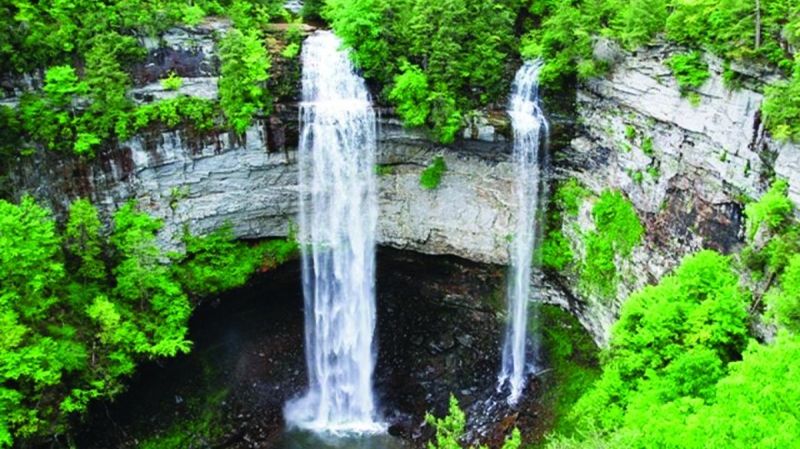
Home to one of the highest waterfalls east of the Mississippi, this Tennessee highlands park spans over 26,000 acres of gorges, cascades, and hardwood forests. Fall Creek Falls plunges 256 feet into a misty pool surrounded by hemlock trees.
Several other significant waterfalls can be found within the park boundaries. The Cane Creek Gorge offers dramatic overlooks and challenging hiking trails.
Nature Center programs introduce visitors to the unique ecosystem of the Cumberland Plateau. Unlike Great Smoky Mountains National Park, which receives over 12 million visitors annually, this park provides similar natural beauty with significantly smaller crowds. The park’s expansive size means you can always find a quiet fishing spot, an empty hiking trail, or a peaceful picnic area even during peak seasons.
14. Palo Duro Canyon State Park, Texas
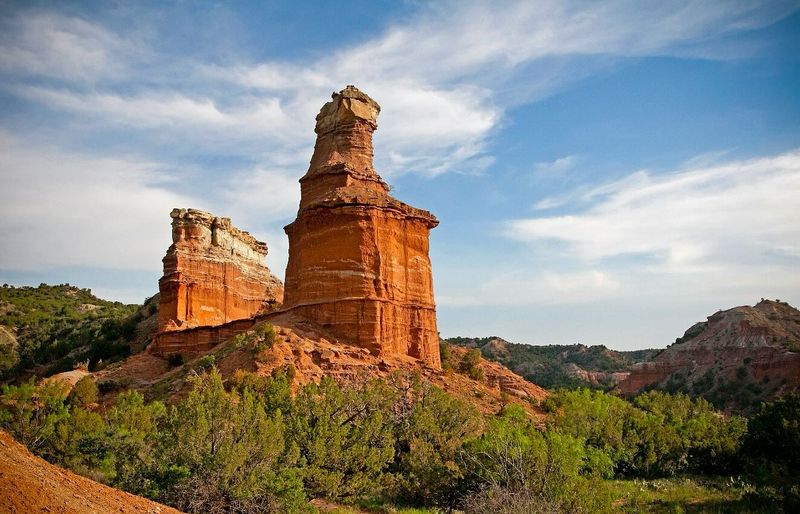
Known as the “Grand Canyon of Texas,” this hidden treasure stretches 120 miles long and up to 20 miles wide. Colorful rock layers tell a geological story spanning millions of years, with hoodoos and mesa formations creating an otherworldly landscape.
The CCC-built road winds down 800 feet to the canyon floor, revealing new perspectives around each turn. Summer brings the outdoor musical drama “TEXAS” performed in the natural amphitheater.
Mountain biking trails range from beginner-friendly to technically challenging routes. Wildlife sightings might include roadrunners, wild turkeys, and the occasional bobcat. Despite being the second-largest canyon in the United States, Palo Duro receives a fraction of the visitors that crowd Grand Canyon National Park, allowing for a more intimate experience with this magnificent landscape.
15. Letchworth State Park, New York
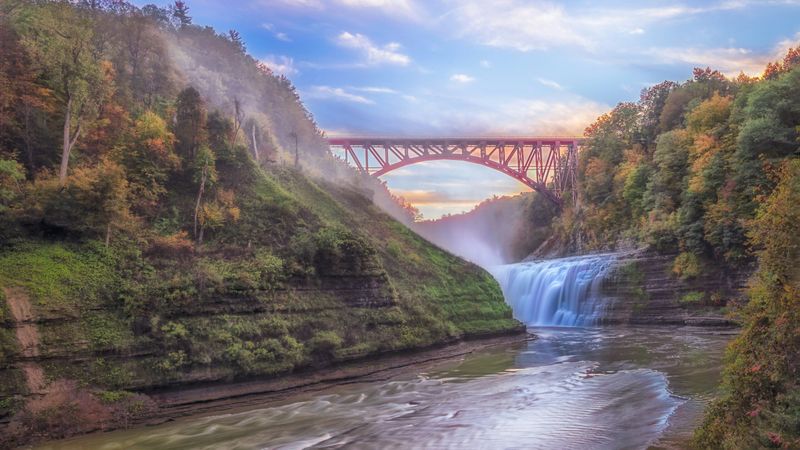
Called the “Grand Canyon of the East,” this Genesee River gorge features three major waterfalls and cliffs rising up to 600 feet. The Middle Falls, illuminated at night during summer months, creates a magical scene as mist rises from the thundering water.
Hot air balloon rides offer unforgettable views of the gorge, especially during fall foliage season. The park contains over 66 miles of hiking trails through old-growth forests.
Glenn Iris Inn, once the estate of the park’s benefactor William Pryor Letchworth, serves meals overlooking Middle Falls. A museum showcases the area’s rich Native American history. Despite earning consistent rankings among the best state parks in the nation, Letchworth never feels overcrowded like comparable national parks, allowing visitors to enjoy its grandeur in relative solitude.
16. Natural Bridges State Beach, California
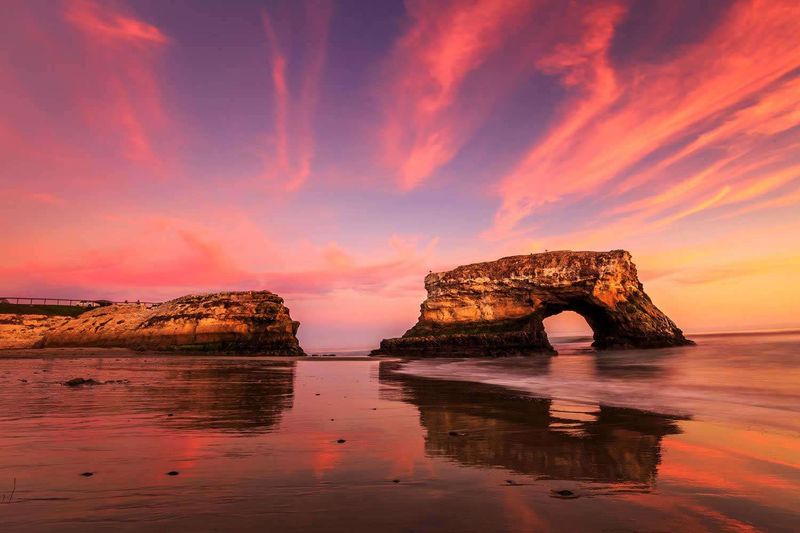
Thousands of monarch butterflies transform this small coastal park into a magical sanctuary each winter. The butterflies cluster in the eucalyptus grove, creating vibrant orange masses that occasionally take flight in spectacular displays.
A natural bridge arches over the beach, carved by millions of years of wave action. Tide pools beneath the arch reveal starfish, sea anemones, and other fascinating marine creatures.
Whale watching opportunities abound during migration seasons from the park’s bluffs. Unlike the often-congested Big Sur coast, this Santa Cruz gem offers similar coastal beauty with easier access and fewer crowds. The park’s small size means you can experience all its natural wonders – from butterflies to beaches to tide pools – in a single day.
17. Ha Ha Tonka State Park, Missouri

Castle ruins overlooking a crystal-clear lake create an unexpected European atmosphere in Missouri’s Ozarks. The early 20th-century stone mansion burned in 1942, leaving behind dramatic ruins perched atop a 250-foot bluff.
Natural bridges, sinkholes, and caves showcase the region’s karst topography. The park’s name comes from Osage Indian words meaning “laughing waters,” referring to the abundant springs.
Wooden boardwalks lead through a rare bottomland fen ecosystem with unique plant species. Unlike crowded national parks, Ha Ha Tonka offers solitary moments among its geological wonders, especially during weekday visits. The park’s diverse attractions – from human history to natural phenomena – make it appealing to visitors with varying interests. Spring wildflower displays and fall foliage provide seasonal highlights.
